- Home
- Encyclopedia
- A Brief History of Laramie, Wyoming
A Brief History of Laramie, Wyoming
Perched on the southeastern corner of the high Laramie Plains, Laramie, Wyo., has been the site of human activity for more than 10,000 years. Today, the town of about 30,800 is well-known for its nationally ranked university, its proximity to the Medicine Bow Mountains and recreational opportunities, and recognized as the historic place where a woman first cast a vote in a general election.
In the early days, American Indians seasonally frequented the area in pursuit of big game. A French-Canadian trapper named Jacques La Ramee, sometimes spelled La Ramie, arrived in the area about 1817,and is thought to have explored the area around the Laramie River in what is now Wyoming. Euro-American settlement commenced in 1862 with the arrival of Ben Holladay’s Overland Stage line.
The impending arrival of the Union Pacific Railroad on the Laramie Plains was assured when company surveyor James Evans laid out the general course of the line in 1864. The 1866 construction of Fort Sanders basically ensured settlement would continue in the area.
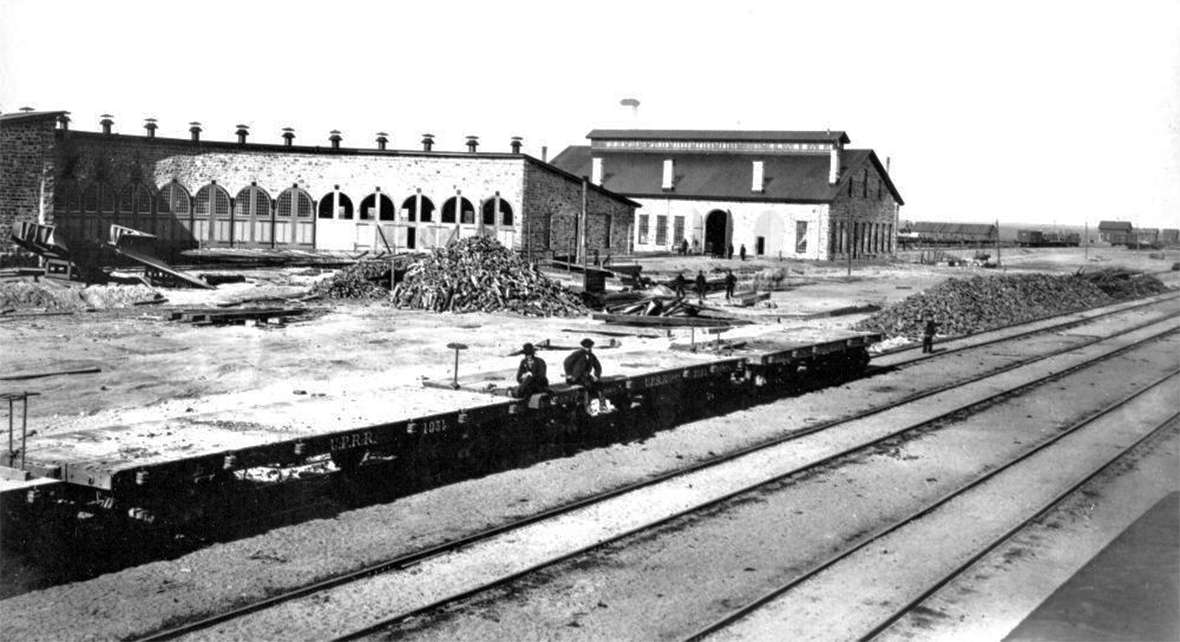

The site of the city itself was not determined until July 1867, when Union Pacific Chief Engineer Grenville Dodge selected the location just north of the fort and located near the Laramie River. The town was apparently named for the river. Dodge had earlier ordered construction of Fort Sanders when he served as the U.S. Army’s commander of the Department of Missouri.
In February 1868, railroad surveyors laid out the streets and lot lines of the new town. Settlers, anticipating the arrival of the rails, started coming to the area about the same time. Among them was Edward Ivinson, who would become the most prominent banker and philanthropist in the city’s history.
Sale of city lots commenced on April 20, 1868. About the same time an announcement from the railroad’s Vice President and General Manager Thomas Durant ensured the town would have a major Union Pacific presence for the next century. Durant surprised other railroad officials and Cheyenne citizens when he announced that Laramie—not Cheyenne—would be the first location of a major repair depot with machine shops, a large roundhouse and a power plant.
As the number of settlers and speculators increased, Laramie citizens determined to elect a provisional government in hopes of curtailing any impending violence. Attorney Melville C. Brown, newly arrived from Cheyenne, was elected mayor on May 2, 1868.
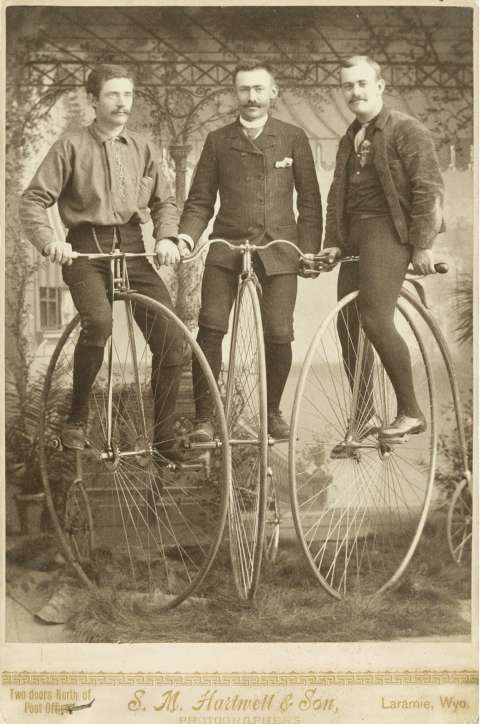
On May 4, 1868, men working for the Casement brothers, contractors, laid track into the burgeoning town.The same day, the first locomotive arrived with residents of Cheyenne aboard, checking out the prospects for investment. Contemporary accounts indicate the town soon swelled to more than 3,000 “residents,” many only transient—typical of the end-of-tracks towns that had sprung up as the railroad built west.
Rough frontier town
In Laramie, violence became endemic, and the provisional government collapsed on June 12, due, as Brown said in his resignation letter, to the “incompetence” of the other elected officials. From that day until mid-October, rowdies controlled the town and trouble increased. Not content to see the town despoiled by the criminals, a vigilance committee was formed. On October 18, three men were lynched and 24 wounded, and the next morning another man was lynched. This put a stop to much of the discord.
With the departure of the railroad construction crews after a few months, the town shrank to 800 residents. Viable businesses, however, were established to meet the needs of the remaining railroad workers and the increasing number of area residents employed in cattle and sheep ranching. With the violent faction gone, Laramie settled in the normal rhythms of a frontier town.
Famous women
Women led the way, establishing the first school in 1869. Worldwide prominence came to the town in 1870. Under the authority of Wyoming Territory’s 1869 Suffrage Act, for the first time in the world, six women in March 1870 were selected and served on a formal jury—and suffered considerable public ridicule for doing so. Six months later, on Sept. 6, 1870, a Laramie woman, Louisa Swain, became the first woman in Wyoming to vote in a general election. She was one of 93 women who voted in Laramie that day. Women were also instrumental in bringing several churches to Laramie by 1871.
Further normalcy came on Jan. 13, 1874, when Laramie was officially incorporated pursuant to an act passed about a month earlier by the Wyoming Territory Legislative Assembly.
A major step forward for the community occurred in 1874 when the Union Pacific announced the construction of a rolling mill on the north side of town. The mill reprocessed worn iron rails into new ones. The plant would eventually employ 300 men. This increased the already large railroad presence, which, according to the 1870 census, employed nearly a third of the 600 men in town.
Agricultural activities
A surge in cattle and sheep businesses bolstered the economy of the new town. Ranches established by Philip Mandel, Thomas Alsop, Charles Hutton, Robert Homer and the Bath brothers necessitated the construction of nearby stockyards so cattle and sheep could be more easily shipped to markets. Later, the stockyards would be expanded, and the railroad would build and operate an ice plant for refrigeration of produce being transported across the country. The Union Pacific’s role in Laramie’s economy would be dominate for nearly a century.
Those same ranchers and newcomers like the Willan Sartoris outfit from Great Britain, continued adding value to the livestock industry. Stock raisers relied on Laramie businesses for their needs, helping the town’s economy to grow more. Ranching reached its zenith in the 1880s, but the cattle market collapsed in 1886, dealing a blow to local business. Agriculture would continue to play a role, albeit diminished, in the Laramie economy through the remainder of its history and to the present day.
Prominent businessmen
The Trabing brothers, who arrived in Laramie about 1869, opened a sizable commercial enterprise to meet the financial needs of the town residents and local businesses, and soon established stores and a freighting business across large parts of the territory. Banking, necessary for any significant community progress, was guaranteed by Edward Ivinson when he purchased the only bank in town in 1871. He converted the private bank into the federally chartered Wyoming National Bank of Laramie in 1873. Ivinson remained the sole banker in Laramie until a competitor, the Laramie National Bank, opened in 1882.
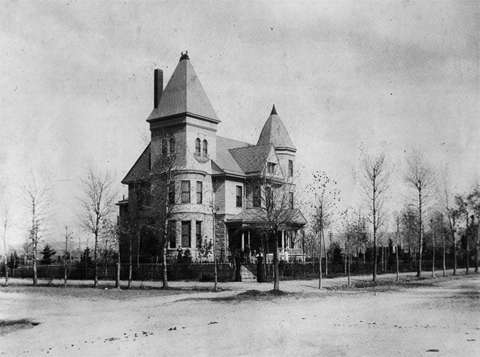
From Laramie’s earliest days, men scoured the mountains east and west of town in search of precious metals. Hoping to strike it rich, many invested substantial sums of money in operations which, unfortunately, showed very meager returns. Attorneys Melville Brown and Stephen Downey were in the forefront of the efforts, each eventually being nearly impoverished by their continuing failures.
Downey, however, would play a very important role in the growth of the community. In 1886, while serving in the Territorial Legislative Assembly, he was largely responsible for the creation of the University of Wyoming and its location in Laramie. For these efforts, he earned the title “Father of the University.”
University of Wyoming
In a deal brokered with legislators from Cheyenne, Laramie gained the university and Cheyenne the permanent location of the soon-to-be state’s capital. The university opened its doors to 40 students in September 1887, marking the beginning of a new chapter in Laramie’s history.
For several years from that small beginning, the University of Wyoming struggled financially, and growth of the student body was slow. Creation of the College of Agriculture enabled the university to tap into federal funds related to the Morrill and Hatch Acts, solidifying its finances. Expanded curriculum and faculty led to increasing enrollment with more than 200 students in 1905; 1,200 in 1925 and more than 2,000 in 1940. Rapid growth after World War II, caused by an influx of veterans using the GI Bill, expanded enrollment even more.
Contemporary economy
With the decrease in railroad jobs in Laramie from the mid 1950s on, the University of Wyoming became the largest employer in the city with nearly 3,000 employees currently. Offering hundreds of degree programs ranging from accounting to zoology, and having received designation as a National Collegiate Athletics Association Division 1 sports program, the university provides a well-rounded educational experience for students throughout the world as well as Laramie and Wyoming residents. In 2018, UW enrollment totaled more than 12,000.
Laramie’s economy, anchored by the university, is nevertheless, quite varied. Tourism, health care and retail sectors combine to provide as many jobs as the university does. Travelers seeking the recreational opportunities offered by the nearby Medicine Bow National forest both winter and summer use Laramie as a hub. City and non-governmental entities such as the Laramie Area Visitor Center and Laramie Main Street Alliance continue to push for more opportunities to further expand the area’s financial base.
More offered for history buffs
Laramie also offers more opportunities for the history buff than almost any other community in Wyoming: the Laramie Plains Museum, the Laramie Historic Train Depot; the Wyoming Territorial Prison State Historical Site; UW’s American Heritage Center; UW’s Emmett D. Chisum Special Collections at Coe Library;and the university’s geology, anthropology and art museums.
The AHC houses nearly 70,000 cubic feet of historically important documents and artifacts and is among the largest non-governmental archives in the nation. With a staff of more than 20, the AHC serves the general public, researchers, genealogists, university students and students from elementary grades through high school who participate in Wyoming History Day.
Local history is commemorated each year with Laramie Jubilee Days. The first celebration was in 1940, and on that occasion, a re-enactment of the 1870 jury was convened, “Miss Equality” was crowned and horse races were run on the west side of town. Held each year in July, the event has expanded to include a multiday rodeo and downtown activities like street dances. In 2018, the celebration will honor Laramie’s 150thanniversary. Additional events and open houses at area museums are among the special festivities planned.
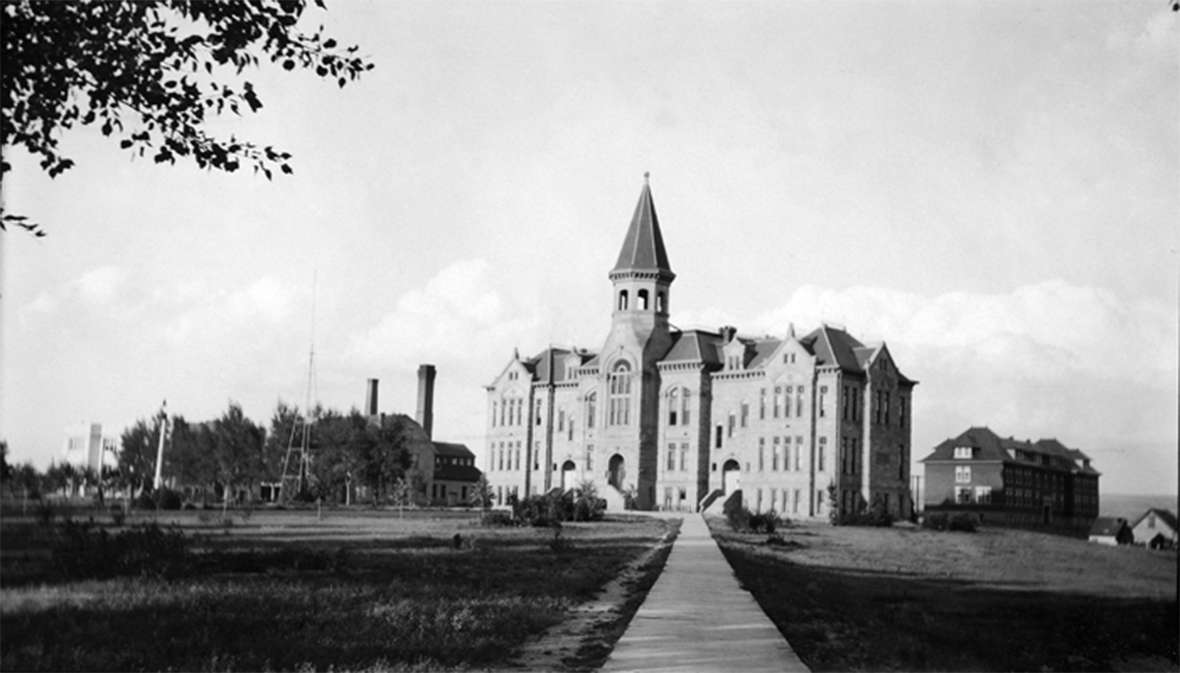
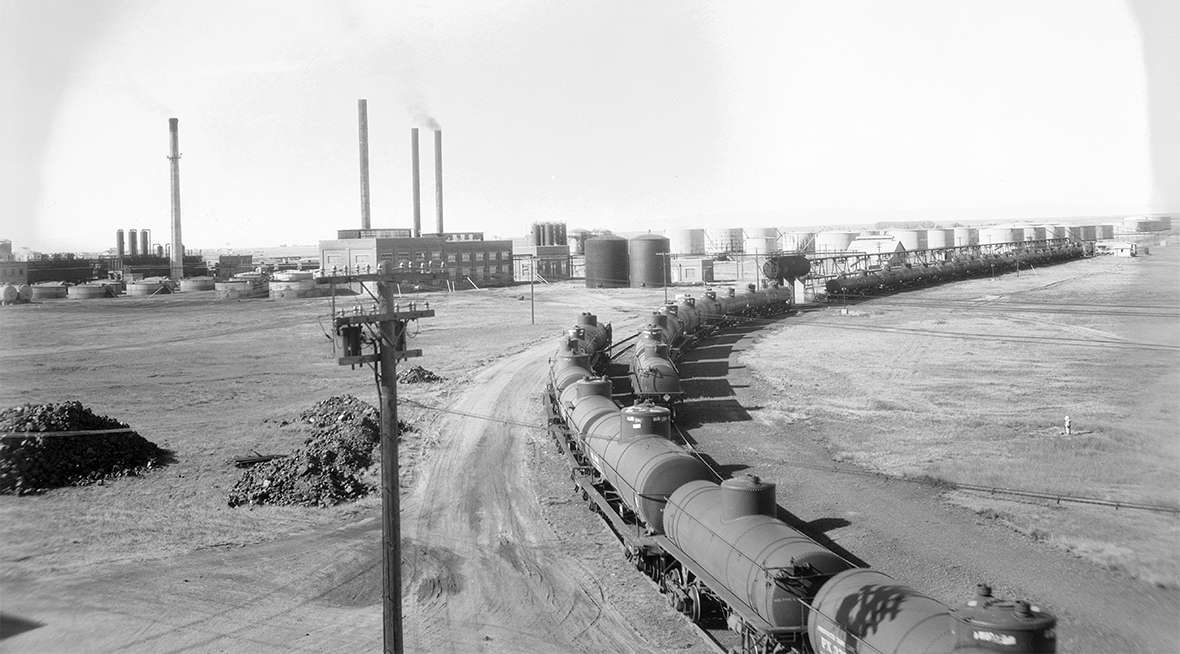
Resources
Primary Sources
- Casement, John and Frances. Papers. Collection Number 00308. American Heritage Center, University of Wyoming
- Downey Family Papers, 1866-1997, Collection Number 10555, American Heritage Center, University of Wyoming.
- General Laws, Memorials and Resolutions of the Territory of Wyoming: Passed at the First Session of the Legislative Assembly, Convened at Cheyenne, October 12th, 1869. Cheyenne, W. T.: S.A. Bristol, Public Printer, 1870.
- General Laws, Memorials and Resolutions of the Territory of Wyoming: Passed at the Second Session of the Legislative Assembly, Convened at Cheyenne November 7th,1871. N.A. Baker, Public Printer, 1872
- Hebard, Grace. Papers. Collection Number 400008. American Heritage Center, University of Wyoming.
- House Journal of the Ninth Legislative Assembly of the Territory of Wyoming. Cheyenne, Wyoming: Bristol and Kane, 1886.
- University of Wyoming Board of Trustees minutes. Accessed April 28, 2018 at http://www.uwyo.edu/trustees/board-meeting-archives
- Wyoming State Library. "Wyoming Newspapers." Accessed April 28, 2018 at http://www.wyonewspapers.org
Secondary Sources
- Albany County Historical Society. Accessed April 28, 2018 https://www.wyoachs.com/.
- Bain, David Haward, Empire Express: Building the First Transcontinental Railroad. New York: Viking, 1999
- Beery, Gladys B. The Front Streets of Laramie City. Laramie, Wyo.: Albany Seniors, Inc., 1990
- Brown, Melville C. Wyoming State Archives MSS #319, “History of Albany County, Wyoming.” 1927.
- Clough, Wilson Ober. A History of the University of Wyoming 1887-1937. Laramie, Wyo.: Laramie Print. Co., 1937.
- Duncan, Mel. The Medicine Bow Mining Camps. Laramie, Wyo.: Jelm Mountain Publications, 1990.
- Fleming, Sidny Howell. “Solving the Jigsaw Puzzle: One Suffrage Story at a Time.” Annals of Wyoming 63, no. 1.
- Hardy, Deborah. Wyoming University the First 100 Years 1886-1986. Laramie, Wyo.: University of Wyoming. 1985.
- Hebard, Grace Raymond. “The Frist Woman Jury.” The Journal of American History VII no. IV (1913): 1293-1341
- Herman, Marguerite. “Albany County, Wyoming.” WyoHistory.org. Accessed April 23, 2018, at /encyclopedia/albany-county-wyoming.
- Homsher, Lola M. The History of Albany County, Wyoming, to 1880. Lusk, Wyoming: Lusk Herald, 1965.
- “Jacques La Ramee.” Wikipedia. Accessed April 23, 2018 at https://en.wikipedia.org/wiki/Jacques_La_Ramee.
- “Laramie, Wyoming.” Wikipedia. Accessed April 23, 2018, at https://en.wikipedia.org/wiki/Laramie,_Wyoming.
- Lawrence, Amy M. From Fox Hounds to Farming: the History of the Douglas-Willan Sartoris Ranch and the Wyoming Central Land and Improvement Company. Laramie:University of Wyoming, 1995.
- Mason, Mary Kay, ed. Laramie—Gem City of the Plains. Dallas, Tex.: Curtis Media Corp., 1987.
- “NCAA Division 1.” National Collegiate Athletic Association. Accessed April 23, 2018, at http://www.ncaa.org/about?division=d1.
- Thybony, Scott, Robert G. Rosenberg, and Elizabeth Mullett Rosenberg. The Medicine Bows: Wyoming's Mountain Country. Caldwell, Idaho: Caxton Printers, 1985.
- Triggs, J.H. History and Directory of the City of Laramie. Laramie WY: Daily Sentinel, 1875
- “University of Wyoming.” U.S. News and World Report. Accessed April 23, 2018, at https://www.usnews.com/best-colleges/university-of-wyoming-3932.
- Viner, Kim. Melville C. Brown, Frontier Lawyer and Jurist. Laramie, Wyoming: Kim Viner: 2015.
- Viner, Kim. Rediscovering the Ivinsons.Laramie, Wyoming: Kim Viner: 2013.
- Viner, Kim, West to Wyoming - The Extraordinary Life and Legacy of Stephen Wheeler Downey. Laramie, Wyoming: Kim Viner: 2018
Illustrations
- The AJ Russell photo of early Laramie rail yards and the photo of Old Main are from the photo library of the U.S. Geological Survey. Used with thanks.
- The photo of the Ivinson Museum is from the Laramie Plains Museum. Used with permission and thanks.
- The photos of Laramie in the early 1870s, the three big-wheel bicyclists and the tank cars and oil refinery are all from the American Heritage Centerat the University of Wyoming. Used with permission and thanks.
